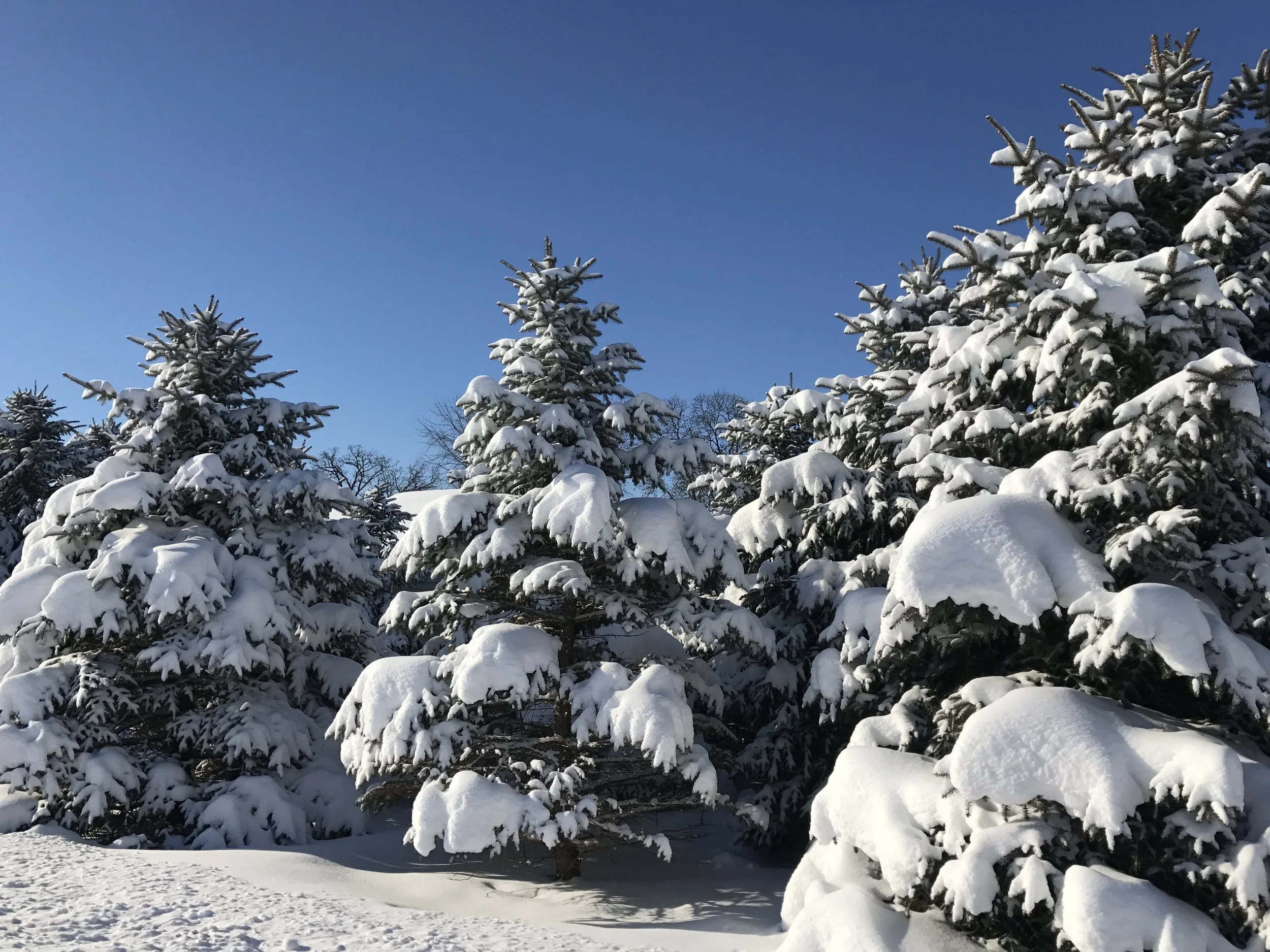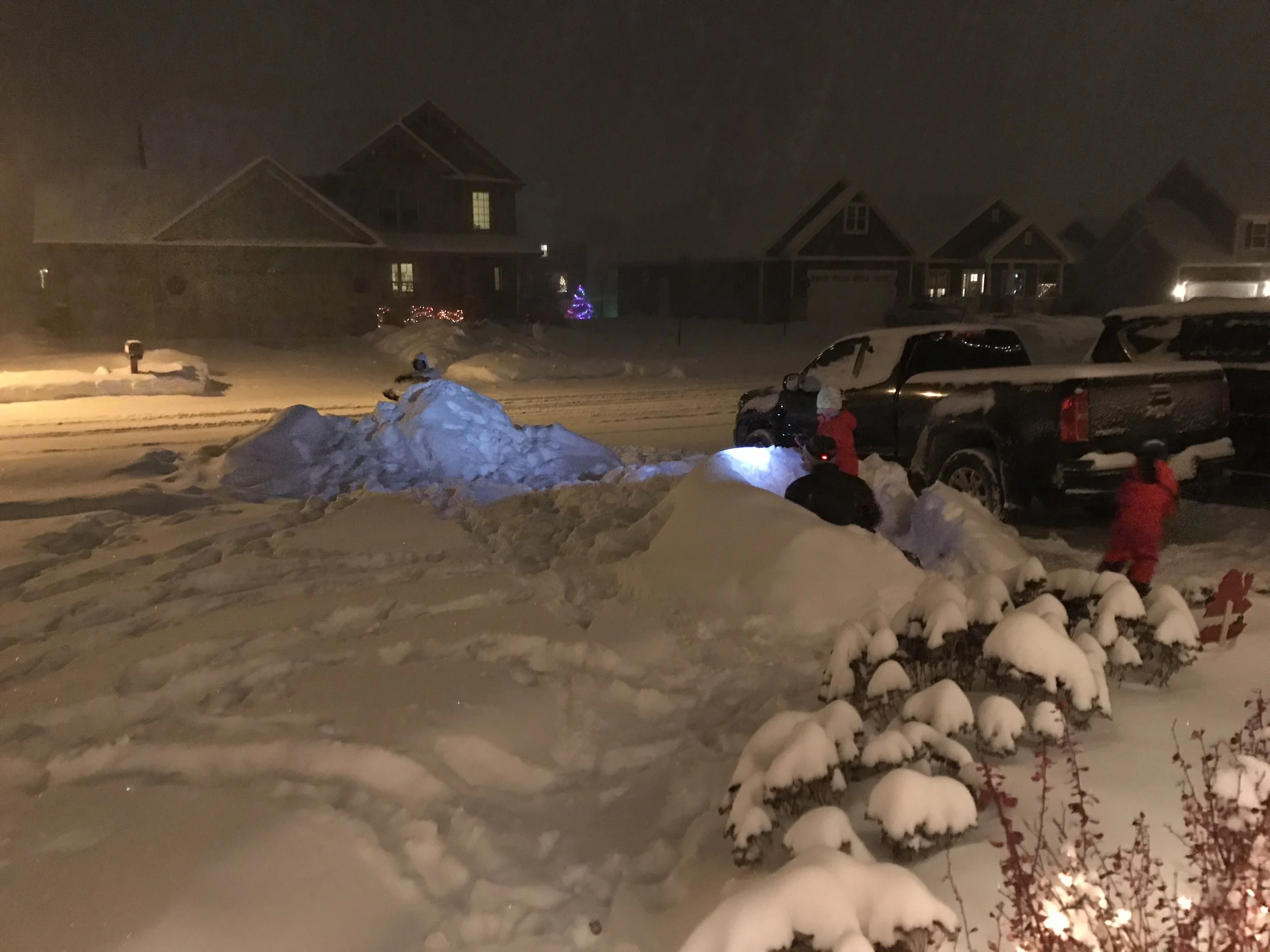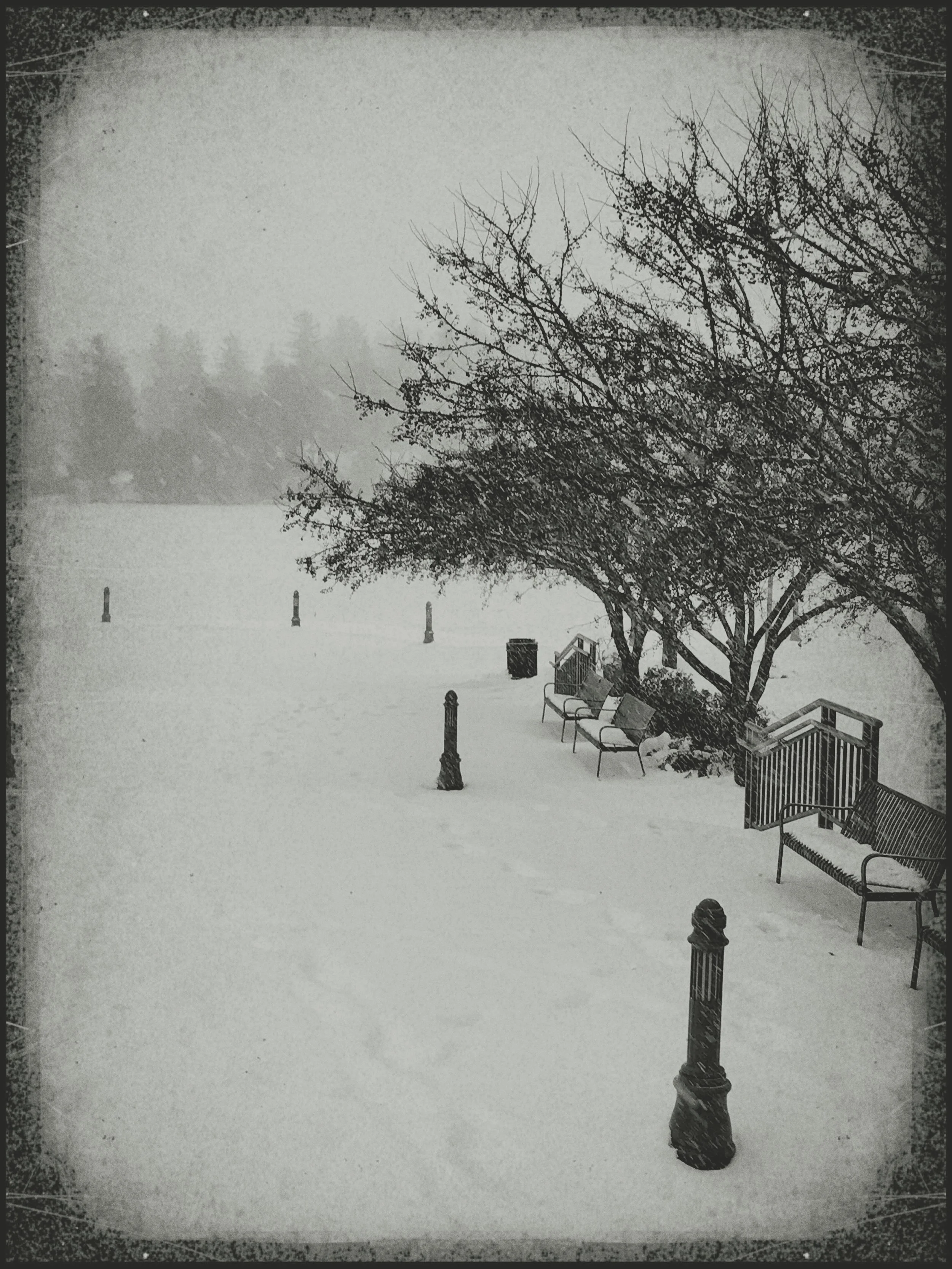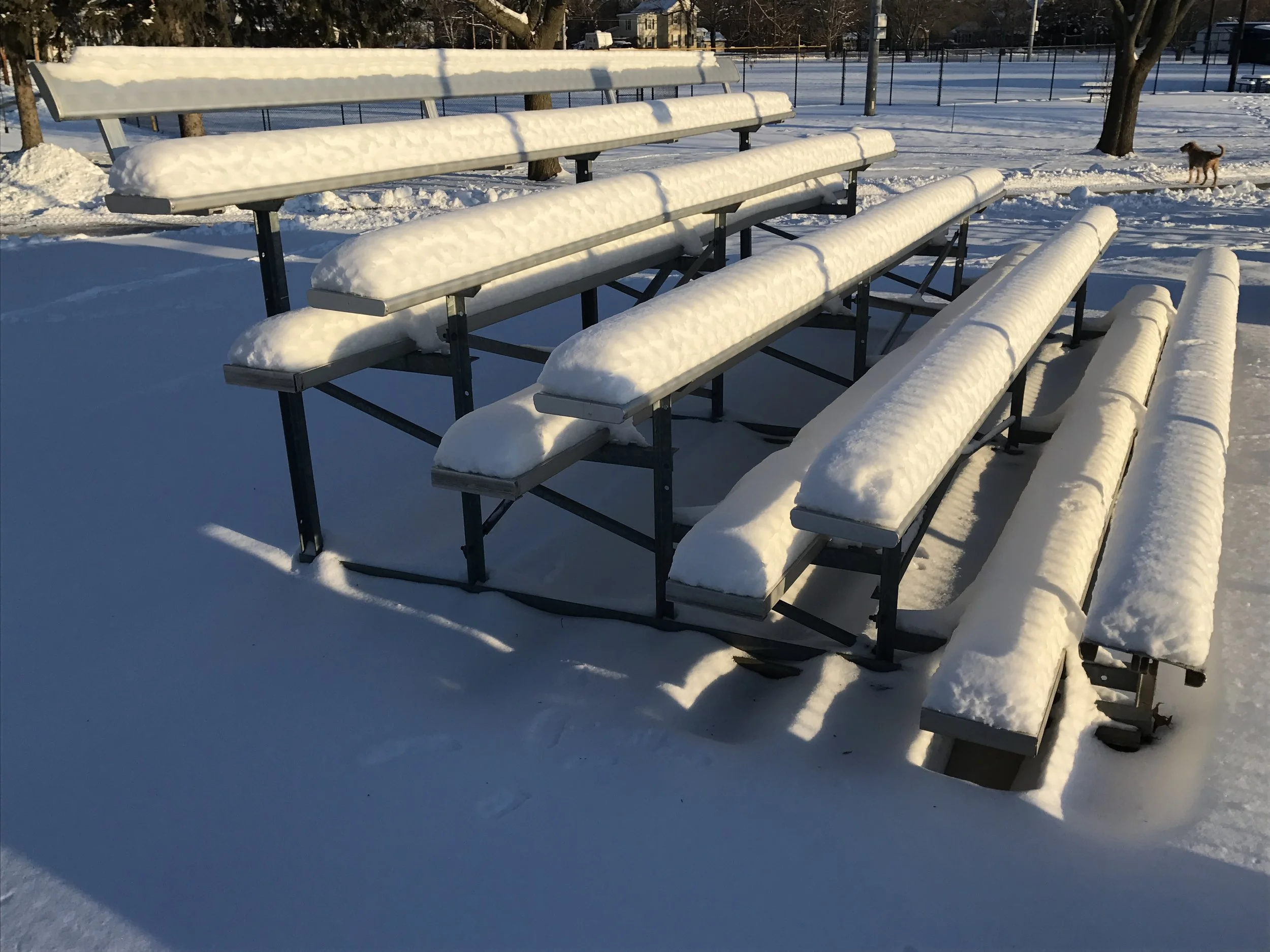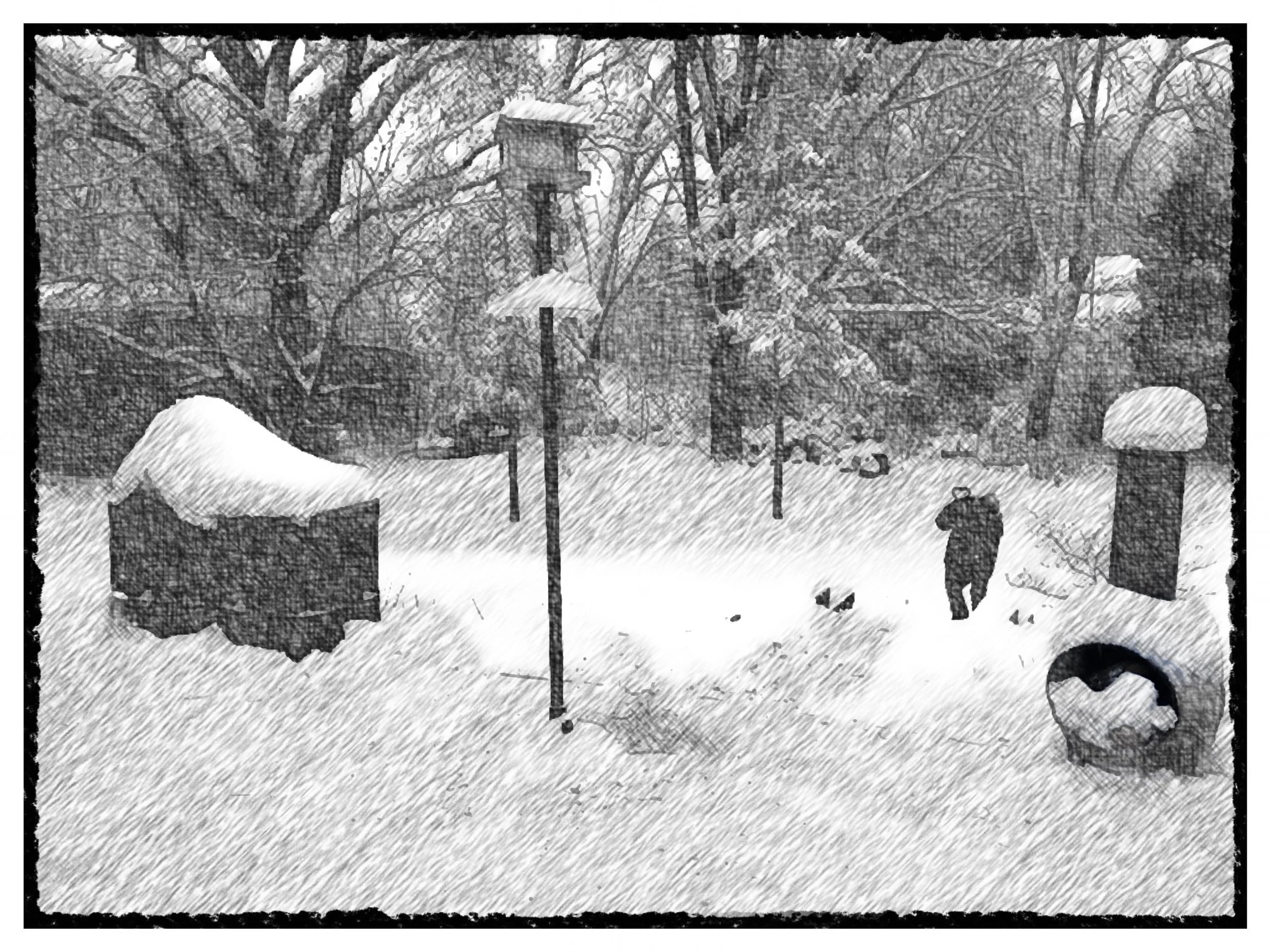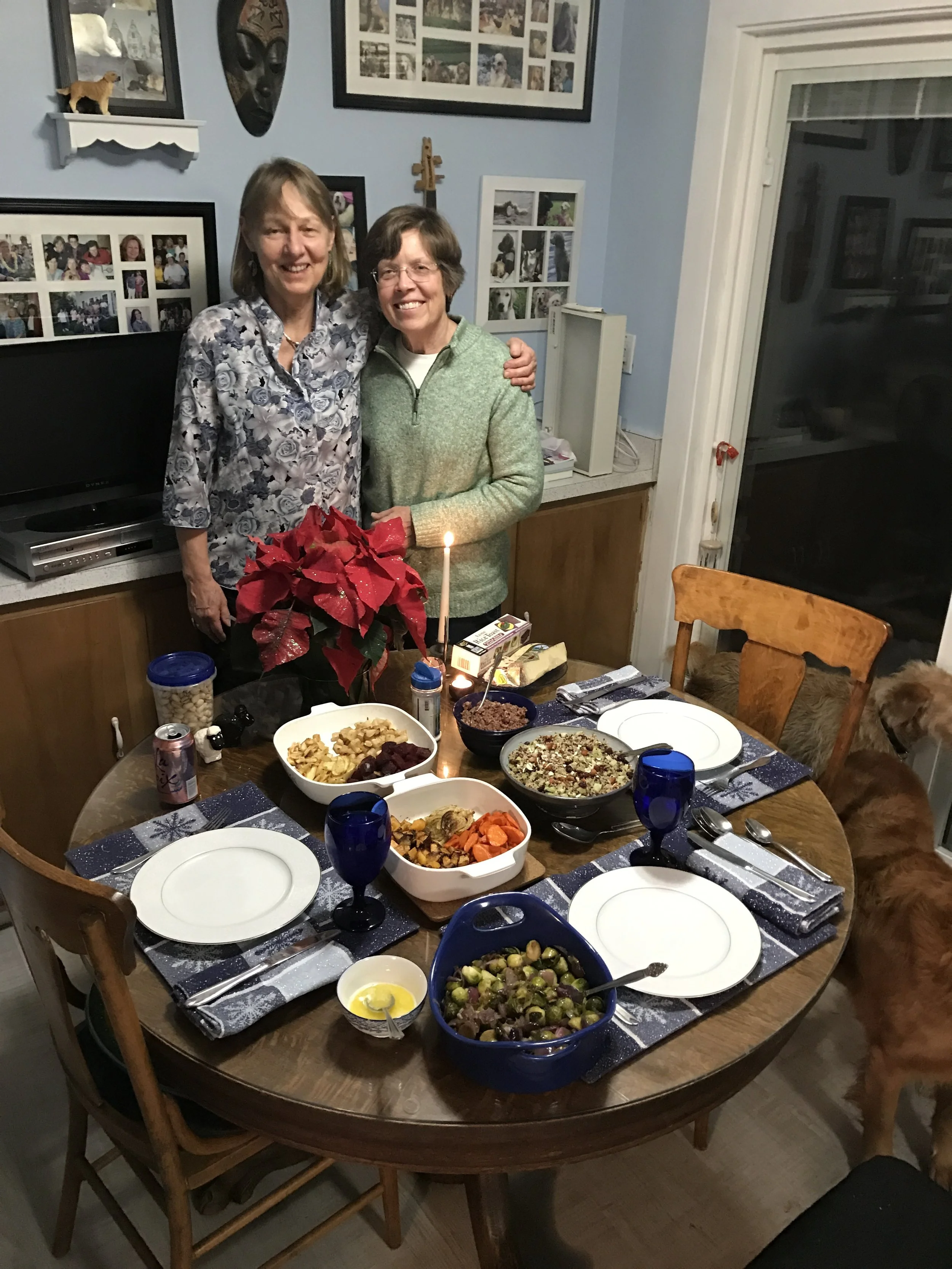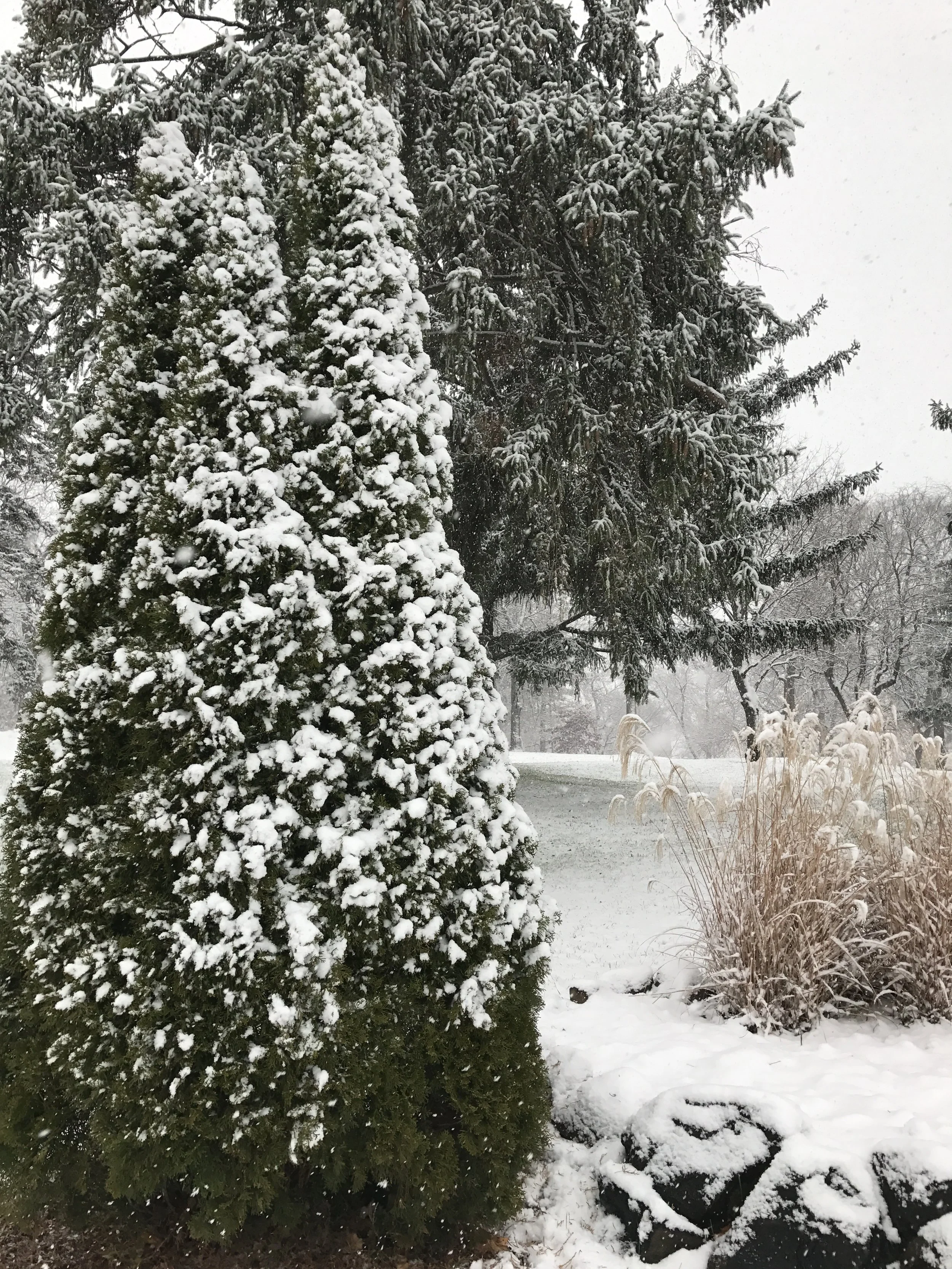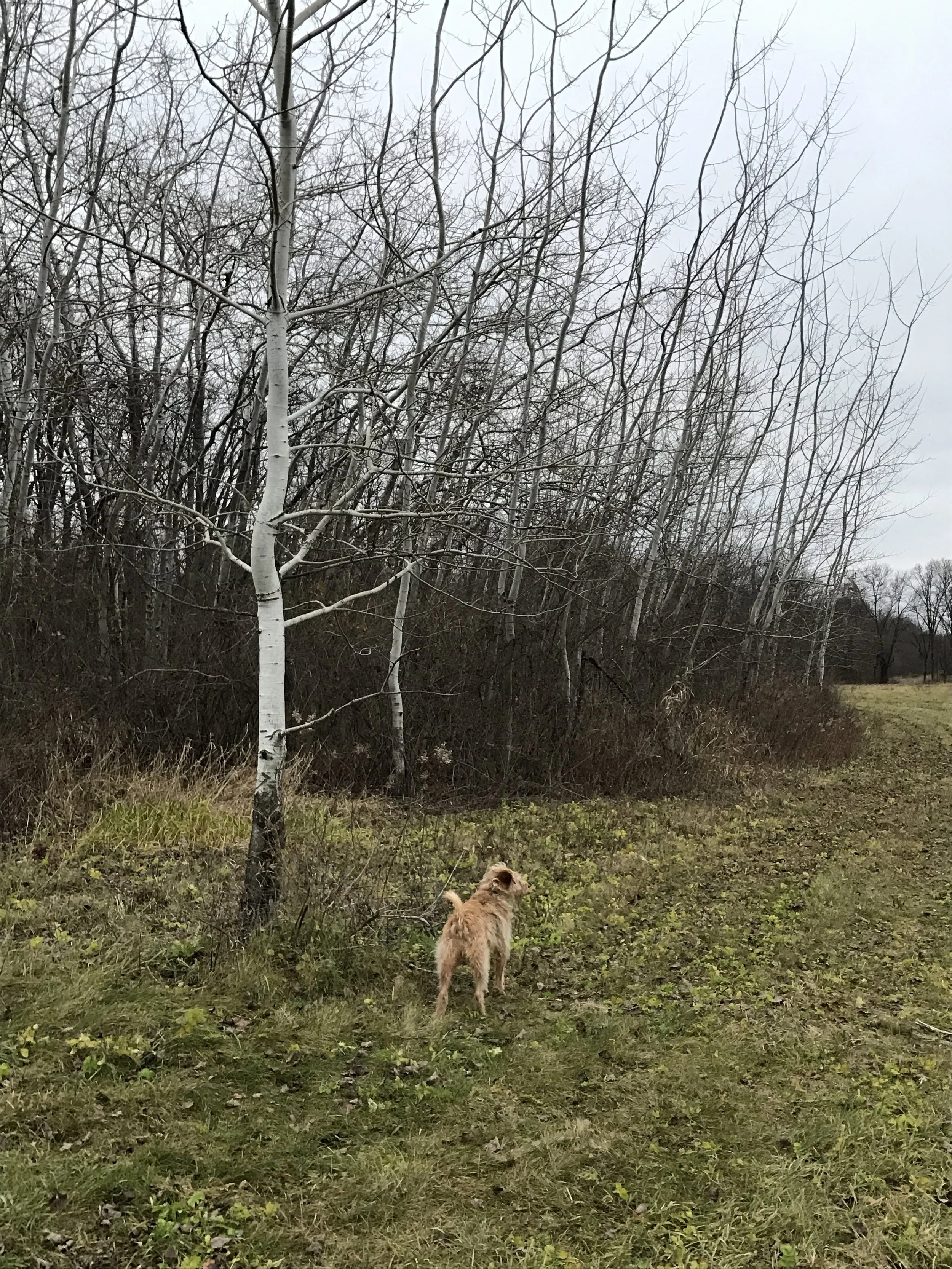Below, a description of the first snow of this season.
~~~~~~~~~~~~~~~~~~~~~~~~~~~~~~~~~~~~~~~~~~~~~~
First of Winter
Last night’s snow, the first of the season, now goes down on the calendar as the beginning of winter, this year. Four to five heavy inches, flocking the trees, covering the remnants of fall, giving the luster of midday to the very long night, revealing, at sunrise a world transformed—and reminding me to put out the birdfeeders.
One hangs from a wide eve, just far enough in from the edge so that a squirrel can’t drop to it, although many have tried. The other sits atop a seven-foot pipe anchored in an umbrella stand and collared by a squirrel baffle, also well tested.
Come morning, with the snow easing up, I fill the feeders. I then wait, wondering, as always, if my efforts will be noticed. For over an hour, nothing happens. Then a black-capped chickadee, brave for his size, flits in for a quick look. Almost at once a second tiny pioneer joins him, and the two of them dart between feeder and nearby redbud, enticed but prudent.
Next to arrive are the juncos, nuthatches, and finches. And then the sparrows, lots of sparrows, of various kinds, which I can never tell apart. By afternoon, the early arrivals are joined by cardinals, doves, and occasionally, a starling or a jay.
Word of new provender has spread fast, though certainly without words—probably through the “many eyes” phenomenon. One of the benefits of belonging to a flock is that many eyes are always looking many ways—with danger, as well as resources, more easily identified. The two intrepid chickadees had no doubt been spotted, and as other birds came to investigate and the crowd grew, the excitement at the feeders became impossible to overlook.
And what a crowd then came to dine! The redbud was festooned with avian ornaments like an overly decorated Christmas tree. The alpine currants along the southern wall, a sheltered gathering place, quaked with life. The ground level gleaners were many and varied, among them eleven squirrels, appreciating everything that found the ground.
Higher up, access to food appeared to be more difficult, more competitive. Often a blur of feathers—too many birds competing for too little perch, and once space attained, a need to defend it, at least long enough to grab a seed or nut. Much bickering—with those convinced of their singular importance and elevated position able to peck their lesser cousins away (temporarily).
So, it appears that, while there are advantages to being in a flock, a good measure of self-esteem is also necessary. The result of the scrum at the trough could, perhaps, be described as a form of sharing, but certainly not the kind that’s taught in kindergarten. It made me wonder if everyone, eventually, got enough to eat.
Seeing all the energy at the feeder also made me wonder what all these animals were doing for food before the feeders went up. Could this many birds survive the winter without human assistance? Surely there is not enough natural forage—in the trees, bushes, yards (and park across the street) for this many creatures?
And while I’m wondering this—poof—an explosion, a whirr, and in an instant and for no apparent reason no sign of anyone, anywhere. Then, a few moments later, everyone starts coming back, in twos and threes, winking into existence, dropping out of the snowy sky and arcing into the feeder.
In no time the crowd has returned—but then the jays appear, one of them swooping in with a scream. When a jay comes in everyone else clears out, cowering in the redbud or the flowering crab. The smaller birds obviously do not think well of jays. But they have no fear of cardinals, which are nearly as big. Cardinals are polite, self-effacing, never pushy, always willing to wait their turn in line. Even the big starlings, with their stiletto bills are not like jays; they don’t bother other diners. While they take up a lot of space at the table, they don’t intimidate, and sparrows of all kinds feel free to join them, shoulder to shoulder.
Below, the squirrels have accepted the fact that, for all their physical prowess and acrobatic abilities, they can’t fly. They appear resigned, but appreciative of all that cascades, like manna, down upon them. They are industrious in their search, thorough, determined, but never squabbling—looking, rather, like a team of GIs assigned to police a parade ground.
A great many squirrels inhabit this neighborhood, more than might seem possible, even with all the oaks in in this and other yards, and in the park. Modern squirrels have no predators that I know of, except for Pax, my terrible terrier, who well knows that as the snow deepens his chance of catching unwary rodents increases dramatically.
Looking out my window I now see, beyond a line of snow-laden cedars, my neighbor putting out what…must… be…squirrel food. While I do admire squirrels for their incredible ability to survive anything nature throws at them, I have never thought of giving them a handout. For me, squirrels have always been the adversary, and instead of intentionally feeding them I’ve imagined them as dinner, as did earlier human occupants of this place.
So far there has been no sign of the sharp-shinned hawk who last year dropped in from time to time to snatch its meal out of the air around the feeder.
So the feast goes on and now, even as evening descends on this short winter day, the area around the feeders remains active, and I wonder why the animals are so hungry. But then I start to think that they must know what’s coming—the long, dark season with deep, deep cold. Survival, we know, will not be easy.
Perhaps by setting out these feeders and providing sustenance not otherwise available I’m bending nature’s law. Perhaps. But life is hard, and having what Mr. Darwin called “endless forms most beautiful” right outside my kitchen window hardly seems a bad thing. I’ve decided that the wild life and I will get through this winter together.

